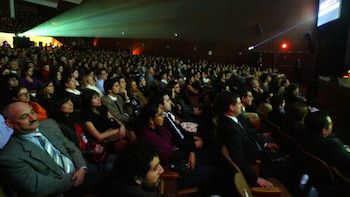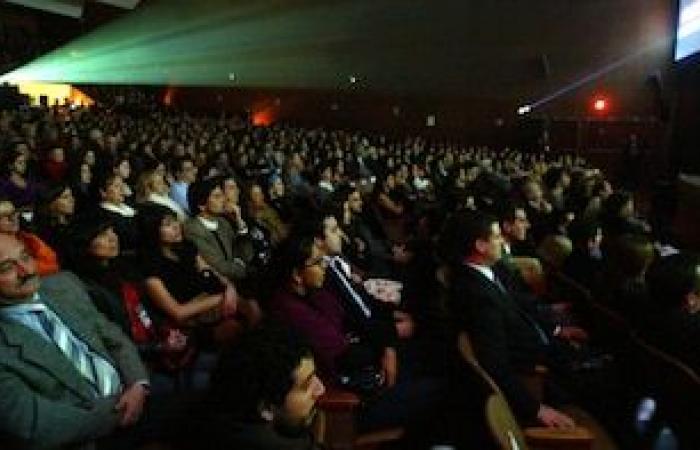The magic of the cinema takes over the Peruvian rooms. The national Association of film Salas of Peru (Anasaci) has announced the celebration of the Cinema Party 2025that the Monday 28 and Tuesday, April 29.
During these two days, all film chains in the country will offer tickets from S/7 soles in 2D regular formats, and discounts on special formats such as Prime and 4DX. The chains will also enable 3D tickets at different prices below normal.

Tickets will be available from the Friday April 25 through the digital platforms of the participating cinema chains and also in person at the cinemas. It is important to review the conditions of each chain, since some can apply additional positions for online purchases.
The main national cinemas will enable the promotion of tickets for S/7; Among these are:
- Cineplanet
- Cinemark
- CineStar
- Movie Time
During these two days, you can enjoy a wide variety of films on the billboardamong them:
- The day the Earth exploded: a Looney Tunes movie.
- Until Dawn: horror night.
- Single, married, widow and divorced 2.
- Drop: Anonymous threat.
- Minecraft.
- Amateur.
- And many more premieres and re -stersons for all tastes.

The Film Festival is an initiative promoted by Anasaci with the aim of bringing the seventh art to all Peruvians, offering tickets at affordable prices and promoting the habit of attending movie theaters. This event has become a tradition expected by cinephiles and families throughout the country.
The 2025 cinema party is the perfect opportunity to enjoy the seventh art in the company of friends and family, without worrying about the cost of entry. Do not miss this cinematographic party and live the cinema as never before!
Cinemark He announced that the prices of the films in 2DXD format (which has twice the size of a normal screen, greater sharpness and an enveloping audio system) will begin from S/7.
3D functions will cost from S/8, while D-Box seats will have a price from S/12. Ticket presale will be available from Friday, April 25.
Promotions can be acquired both in physical and online ticket office. It is important to keep in mind that Cinemark applies a surcharge of S/0.5 for each entry bought online, as well as a surcharge of S/0.8 for purchases of confectionery products made online.
-For its part, Cineplanet He informed that April 28 and 29 promotions are also valid for films in Xtreme format, at all times. The Cineplanet presale also starts on Friday, April 25 and purchases can be made in ticket offices, through its website or through its mobile application.
In accordance with the regulations established by the National Institute for the Defense of Competition and the Protection of Intellectual Property (INDECOPI), As of 2018, only in Cinemark and Cineplanet cinemas, the entry of foods that are not provided by the company is authorized, provided they are equivalent to those offered in their establishments, such as corn palomites, soft drinks, water, sweets, among others.
In theaters not mentioned if it is forbidden to enter with external foods.
The history of cinema begins at the end of the 19th century, when technological advances allowed to capture and project moving images. Here you have a brief and clear summary:
Origins (1890s – 1910s)
- 1895: The Lumière brothers present the Cinematographer In Paris, considered the official birth of cinema.
- The first films were Brief documentaries (ej. The exit of the factory workers).
- Shortly after, Georges Méliès introduced fiction and special effects with films such as Moon trip (1902).
Cine mudo (1910s – 1920s)
- Genres and cinematographic language are developed.
- Hollywood It emerges as the World Cinema Center.
- Figures like Charlie Chaplin, Buster Keaton y D.W. Griffith They become icons.
Sound cinema (1927 onwards)
- 1927: The Jazz singer Enter synchronized sound, revolutionizing the industry.
- Musical cinema, black cinema and spoken drama develop.
Cinema in color (1930s – 1950s)
- Technicolor becomes popular with films such as The Oz Wizard (1939) y What the wind took (1939).
- It is the golden age of Hollywoodwith studies such as MGM, Warner Bros. and Paramount dominating.
New waves (1950s – 1970s)
- Movements such as New wave In France and the Italian Neorealism.
- The cinema becomes more author and critical.
- In the US, the study system falls and more experimental films are born.
Contemporary Cinema (1980s – Today)









